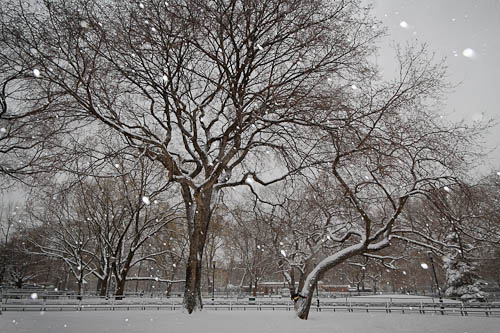Pushing the boundaries of the original specification, CSS3 filters and blends can radically change the appearance of your HTML elements.
Filters
See the Pen Splash by Dirk Weber (@DirkWeber) on CodePen.
Example of a SVG filter created by Dirk Weber
CSS Filters has its origin in a SVG (Scalable Vector Graphics) feature for applying image processing effects to vector graphics. Robert O’Callahan figured out how to apply the filters effects to HTML content via CSS.
How Filters Work
Before the rendered page loads, the filter takes a snapshot of the page as a bitmap. The effects are then applied to the HTML elements, which are rendered and composited into a finished page. There are many filters.
It is possible to animate the effects as well, as you can see in the following demo. Filter values are mostly between 0 and 100%, or 0 to 1.0, some go higher.
- blur(0px) A unit number to determines the amount of gaussian blur.
- brightness(0-1-10) 0 darkens the picture to black, 1 is normal and up to 10 increased the brightness.
- contrast(0-1-10) where 0 is solid grey, 1 is normal and up to 10 increased the contrast.
- drop-shadow(15px 15px 20px silver)
- grayscale(0-1) Reduce chroma gradually to none at all.
- hue-rotate(0- 360deg) Rotate the hue through all the colors.
- invert(0-1) Inverts the colors, .5 is solid grey.
- opacity(0-1) Where 0 is transparent and 1 is opaque, and everything in between is translucent.
- saturate(0-1-10) Saturates the colors, where 0 is greyscale, 1 is normal saturation and up to 10 increases the saturation
- sepia(0-1) Increase in sepia toning of the print;
CSS Code View
Taiyo in the Snow
Anyone familiar with Tompkins Square Park will know that this great tree has been cut down. It was deemed a safety hazard.

CSS Code View
Blending Modes
The CSS composting and blending modes feature lets us blend an element’s background layer with another background layer, to blend between background images, gradients, and background colors, or to blend one element with another element.
How Blend Modes Work
Just like in Photoshop, two layers are usually added, with the top layer replacing the bottom layer. The blend modes lets you specify other mathematical relations between the two layers. For example, the multiply mode multiplies the two layers together, with the result that is darker than either layer.
The power of background blend modes can be seen in this compositing blends demo
Background Blending
Background blending blends the layers within a background. This is useful for blending a picture with a background color.
The following blending modes are implemented in webkit and follow those found in Photoshop:
- normal
- multiply
- screen
- overlay
- darken
- lighten
- color-dodge
- color-burn
- hard-light
- soft-light
- difference
- exclusion
The following blending modes are not yet implemented by webkit
- hue
- saturation
- color
- luminosity
CSS Code View
A more complicated example blends multiple layers. Change the blending mode of each background with varying results.
CSS Code View
Blending Elements
Blending between background layers is all very fine but blending between HTML elements is accumulative, that is, the blend blends the blending associated with each element in the element stack.
There are four elements in the following demo, once container and three children. The blend of each child plays a roll in the final outcome. You can play with the stacking order z-index or change the blending modes to see how these elements interact
CSS Code View
bla bla bla bla bla bla bla bla bla bla bla bla bla bla bla bla bla bla bla bla bla bla bla bla bla bla bla bla bla bla bla bla bla bla bla bla bla bla bla bla bla bla bla bla bla bla bla bla bla bla bla bla bla bla bla bla bla bla bla bla bla bla bla bla bla bla bla bla bla bla bla bla bla bla bla bla bla bla bla bla bla bla bla bla bla bla bla bla bla bla bla bla bla bla bla bla bla bla bla bla bla bla bla bla bla bla bla bla bla bla bla bla bla bla bla bla bla bla bla bla bla bla bla bla bla bla bla bla bla bla bla bla bla bla bla bla bla bla bla bla bla bla bla bla bla bla bla bla bla bla bla bla bla bla bla bla bla bla bla bla bla bla bla bla bla bla bla bla bla bla bla bla bla bla bla bla bla bla bla bla bla bla bla bla bla bla bla bla bla bla bla bla bla bla bla bla bla bla bla bla bla bla bla bla bla bla bla bla bla bla bla bla bla bla bla bla bla bla bla bla bla bla bla bla bla bla bla bla bla bla bla bla bla bla bla bla bla bla bla bla bla bla bla bla bla bla bla bla bla bla bla bla bla bla bla bla bla bla bla bla bla bla bla bla bla bla
Complex Blend Effects
CSS Code View
Masks
Masks allow you to use an image or a polygon clip path to reveal only part of an element. Just like in Photoshop, the white areas display and the black areas do not.
peace